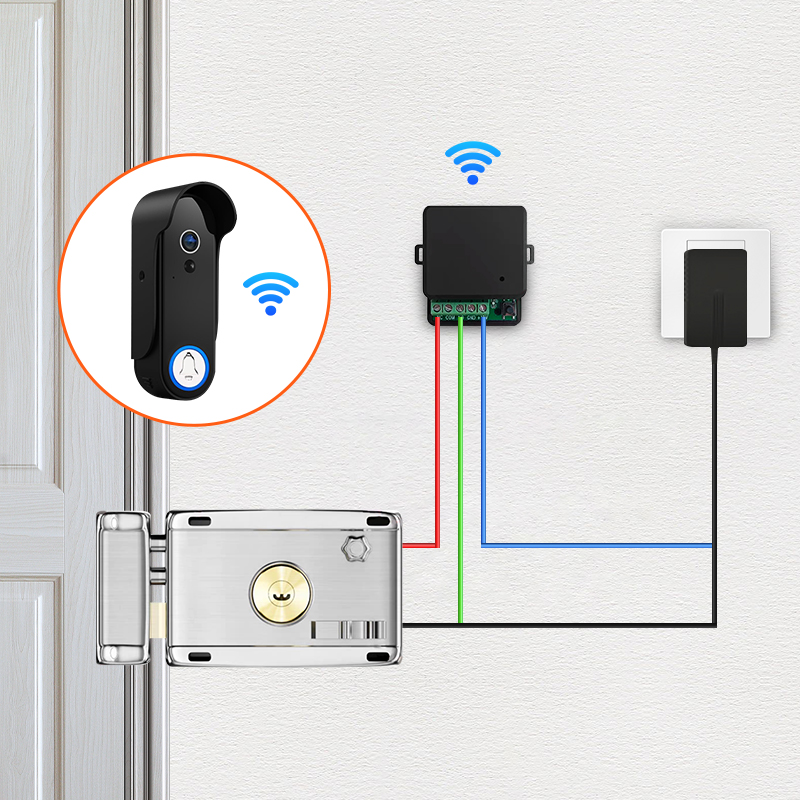深度解析表面声波触摸屏技术在智能门铃中的应用
Time:2024-04-26 14:43:13 Views:58次
Introduction:
In today's smart home industry, smart doorbells, as an essential component of home security, play a crucial role in user satisfaction with safety protection. The surface acoustic wave touchscreen technology, as the core interface of smart doorbells, is pivotal for the performance and functionality of these devices. This article delves into the principles of surface acoustic wave touchscreen technology, unveiling its mechanism of sound wave propagation, signal reception and processing, and comparative analysis with other touchscreen technologies, aiming to provide readers with a comprehensive understanding and accurate grasp of this critical technology.
Sound Wave Propagation Mechanism:
Surface acoustic wave touchscreen utilizes the principle of ultrasonic sound wave propagation on the surface of the touch panel to enable touch operations. Sound waves are generated by transmitters and propagate along the surface of the panel, then captured and interpreted by receivers. This propagation method enables the touchscreen to accurately detect touch positions and gestures on the surface.
Sound Wave Reception and Processing:
Receivers convert received sound wave signals into electrical signals, which are then transmitted to the touchscreen controller or processor for processing. The controller analyzes the received signals, determines touch positions and operations, and feeds the results back to the system for response. This process achieves highly sensitive and accurate recognition of touch operations.
Comparative Analysis of Working Principles:
Compared with other touchscreen technologies, surface acoustic wave touchscreen has unique advantages. Firstly, its surface-propagated sound waves enable accurate detection of touch positions, offering high sensitivity and precision. Secondly, the sensing elements of the touchscreen are located on the underside of the panel, providing durability and stability. However, due to the limitations of sound wave propagation, it cannot achieve multi-touch functionality, which may be restricted in certain application scenarios.
Practical Application Scenarios:
Surface acoustic wave touchscreen technology finds widespread application in areas such as public information query devices, self-service terminals, and more, allowing rapid and accurate response to user touch operations. In smart doorbells, it provides a stable and responsive touch interface, facilitating user operations and settings, and crucially supporting the intelligence of smart doorbells.
Optimization Design and Future Development:
To further enhance the application effectiveness of surface acoustic wave touchscreen technology in smart doorbells, technological upgrades can be made through optimization design, improving sensor sensitivity, and response speed. With the advancement of technology, we can expect more advanced materials, manufacturing processes, and smarter touchscreen systems in the future, providing users with a more convenient and intelligent user experience.
User Experience Improvement and Security Considerations:
In addition to technical improvements, user experience and security are also key considerations in smart doorbell design. Through humanized interface design, simple and understandable operation procedures, and secure data transmission protocols, user satisfaction and experience can be enhanced, ensuring the safe use of smart doorbells.
Conclusion:
Surface acoustic wave touchscreen technology, as one of the core technologies of smart doorbells, is crucial for enhancing the performance and user experience of these devices. By continuously optimizing design, improving technology, and focusing on user needs and security considerations, we can make smart doorbells more intelligent, convenient, and secure, providing users with better home security protection and user experience.
Chinese Website——www.dgjiasong.com

PREV:婴儿监视器技术解析:声音检测的重要性